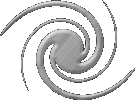
DEPARTMENT OF
ASTRONOMY


 DEPARTMENT OF ASTRONOMY |
Planetary
Atmospheres and Space Science Group
|
|---|---|
 |
 |
We wish to gather all possible data related to our observations. So please feel free to send us an email if you are involved in similar observations and would like to link your page to our website. From previous email communications, we have found out about the following observations being carried out at the same time than the HST campaign.
According to Randy Gladstone and Scott Wolk, the XMM and Chandra Observations for Jupiter will take place at the same time than our HST campaign. The exact schedule is the following:
| OBSID | TARGET | CHANDRA ORBIT |
|---|---|---|
| 7405 | Jupiter | 1037 (Feb 8) |
| 8216 | Jupiter | 1038(Feb 10) |
These two observations cannot be coordinated with XMM, as XMM cannot view the target at this time.
| OBSID | CHANDRA WINDOW | XMM WINDOW |
|---|---|---|
| 8217 | 2007:055:21:30 to 2007:056:02:30 | 2007:055:20:30 to 2007:056:02:30 |
| 8219 | 2007:062:07:33 to 2007:062:12:33 | 2007:062:06:33 to 2007:062:12:33 |
| 8220 | 2007:066:05:30 to 2007:066:10:30 | 2007:066:14:30 to 2007:066:20:30 |
| 8218 | 2007:067:21:30 to 2007:068:02:30 | 2007:067:20:30 to 2007:068:02:30 |
Observations of the Io footprint by F. Reyes (Florida Radio Observatory) will also complement the data of the HST campaign. According to the current provisional schedules, there is only one window suitable for both radio and Hubble observations during the Feb.-March period for the Univ. of Florida Radio Observatory (UFRO) is Feb 17 from 12 to 13 (UT).
Here is a small summary of Francisco Reyes's description of his intruments: The coordinates of UFRO are Long.= 83 deg. 02' W, Lat.= 29 deg. 32' N . The antennas are 8 conical log periodic (TP) RH polarized and 8 TP's LH polarized. The TP array can observe from about 4 hours before transit to about 4 hours after transit of Hour Angle. Playing with the phasing switches, this can be extended to 4.5 or even 5 hours. At the present the radio spectrograph is functioning 24 hour/day in the frequency range from 18-28 MHz and in a couple of weeks they will extend the low frequency end down to 15 MHz. They also have 7 fixed frequency receivers at the frequencies of 18, 20, 22, 24, 26, 28 and 32 MHz which record the RH and LH circularly polarized components of Jupiter emission.
The position of the Cassini Spacecraft relative to Saturn can be followed in real time at the Cassini website. The Cassini measurements include measurements of the Magnetic field, nad particle properties in the magnetosphere of Saturn that can be combined to help explain the images of Auroras taken by HST.
The New Horizon spacecraft travelling to Pluto will fly by Jupiter in February, taking measurements at the same time as Hubble will observe the Aurora on the giant planet. Visit the New Horizon website for further information.
The simultaneous observations include 3 visits during which the satellite Io will be visible from Earth (in the HST field of view). NH will be observing and taking data at the same time.
Furthermore, observations during the Torus scans on 2/28/2007 10:10 - 10:40 UTC and 3/1/2007 7:58 - 8:14 UTC will be useful for comparison of torus longitudinal asymmetries with those in the main oval. The scans are planned to coincide with torus equator plane crossing views. Io is also present in the noon ansa scan, which means that the Io foot print and/or tail may be in view for HST.
New Horizons Observing planAccording to Glenn Orton (Padma Yanamandra-fisher, JPL), observations of Jupiter's atmopshere, including auroral-related stratospheric heating are currently scheduled for: